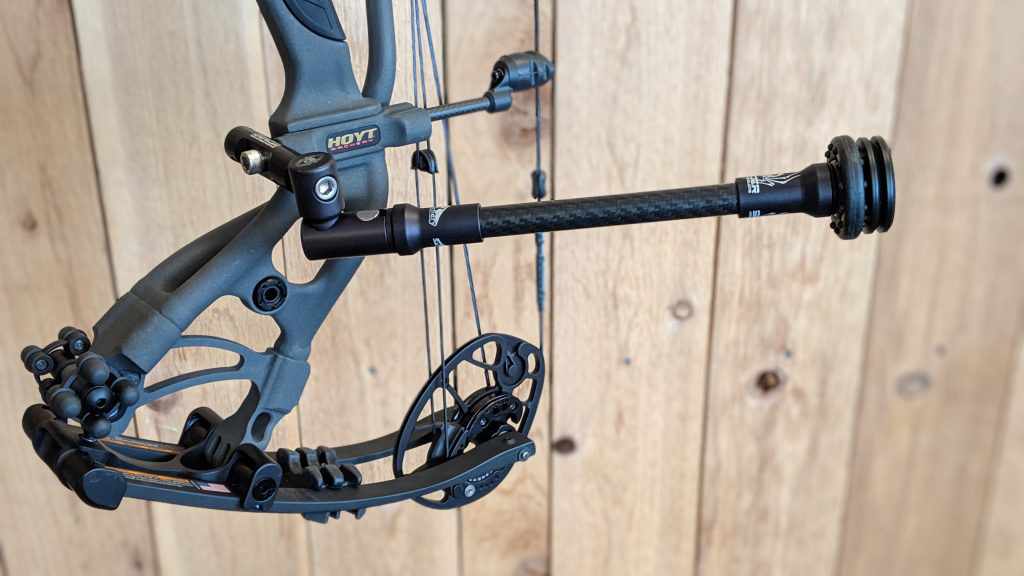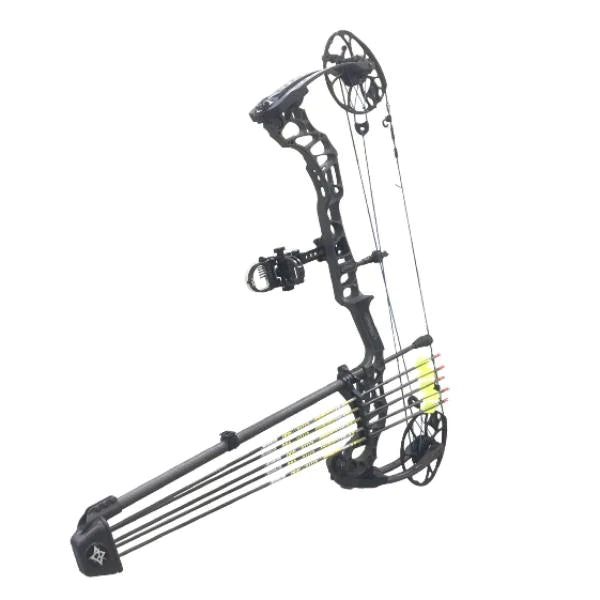Fine-Tune Your Goal: The Scientific Research Behind Compound Bow Stabilizers
Fine-Tune Your Goal: The Scientific Research Behind Compound Bow Stabilizers
Blog Article
Optimizing Your Archery Performance With the Right Compound Bow Stabilizer: a Detailed Introduction
In the world of archery, uniformity and precision are paramount to achieving ideal performance. One often-overlooked yet vital part in enhancing precision is the compound bow stabilizer. This plain gadget plays a considerable duty in steadying your objective, decreasing bow torque, and soaking up resonances. The effectiveness of a stabilizer hinges on numerous elements, including weight, design, and placement. By recognizing the nuances of choose and maximizing a compound bow stabilizer, archers can fine-tune their equipment to raise their shooting experience to new levels of efficiency and control.
Significance of Bow Stabilizers in Archery

Furthermore, bow stabilizers aid in balancing the weight circulation of the bow, which can boost the archer's security while aiming and firing. By including weight to the front of the bow, stabilizers can lower the amount of torque experienced upon release, causing a smoother and extra controlled shot - compound bow stabilizer. This weight circulation additionally assists in holding the bow constant for a longer duration, enabling the archer to intend much more accurately
Types of Compound Bow Stabilizers
When taking into consideration the different kinds of substance bow stabilizers offered, it is vital to recognize their distinct functions and features to identify one of the most ideal alternative for making best use of archery efficiency. The most common sorts of substance bow stabilizers consist of sidebar stabilizers, front stabilizers, and back stabilizers. Sidebar stabilizers attach to the sides of the riser and aid in stabilizing the bow during the intending process. Front stabilizers, also referred to as lengthy poles, are connected to the front of the riser and help in soaking up and reducing any type of resonances triggered by the launch of the arrow, therefore enhancing precision. Back stabilizers, likewise called rear stabilizers, are installed to the rear of the bow and assist in reversing the weight of various other accessories, causing improved security and steady aiming. Additionally, some stabilizers come with adjustable weights that permit archers to tweak the equilibrium and feel of their bows according to their preferences, making them functional choices for archery lovers of all degrees.
Factors to Consider When Picking
In reviewing substance bow stabilizers, recognizing the unique attributes and functions of each kind is critical for making an educated decision on the most suitable alternative to enhance archery performance. When selecting a stabilizer, one should think about the weight of the stabilizer itself. By thoroughly reviewing these variables, archers can select a substance bow stabilizer that lines up with their shooting design and optimizes their overall performance on the archery variety.
Installment and Change Tips
For optimal performance and accuracy in archery, mastering the installation and modification of your bow stabilizer is crucial. Proper installment starts with attaching the stabilizer to the bow's riser, guaranteeing it is strongly protected. The majority of stabilizers come with installing equipment for very easy installation, however it's essential to comply with the supplier's standards for the particular model you have. When attached, adjusting the stabilizer entails locating the best equilibrium in between weight circulation and length. Try out various mixes until you achieve the desired feel and security.
When adjusting the stabilizer, begin with small incremental changes instead than radical adjustments. Pay interest to exactly how the bow responds to modifications in stabilizer setups and make changes accordingly. On a regular basis check the stabilizer's tightness and overall condition to ensure it continues to function ideally.
Upkeep and Treatment Guidelines

It is likewise crucial to keep your bow with the stabilizer in a safe and safe and secure place when not in use. Following these maintenance and treatment standards will certainly aid you get the most out of your bow stabilizer and boost your general article archery efficiency.
Verdict
In conclusion, selecting the right substance bow stabilizer is crucial for maximizing archery performance. Understanding the value, types, factors to think about, setup and modification ideas, as well as upkeep and care standards can substantially influence one's precision and consistency in capturing. By selecting a stabilizer that suits individual requirements and preferences, archers can boost their overall performance and accomplish far better outcomes on the array or in competition.
Bow stabilizers play an essential duty in boosting an archer's accuracy and uniformity by my latest blog post minimizing resonances and supporting the bow throughout the release of an arrow - compound bow stabilizer.In addition, bow stabilizers help in stabilizing the weight circulation of the bow, which can enhance the archer's security while intending and firing. The most usual kinds of compound bow stabilizers include sidebar stabilizers, front stabilizers, and back stabilizers. Back stabilizers, also called rear stabilizers, are placed to the back of the bow and aid in counteracting the weight of other devices, resulting in improved stability and steady aiming. When picking a stabilizer, one must think about the weight of the stabilizer itself
Report this page